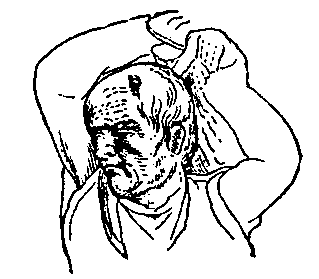|
Dictionary: Search the Dictionary Browse the Dictionary |
|
Timeline: Launch Interactive Timeline |
| Return to Front Page |
| PHIDIAS | |
| Form: Gr. Pheidias. | |
Deprecated: Function split() is deprecated in /www/www-ccat/data/classics/myth/php/tools/dictionary.php on line 64 The famous Greek artist, born about 500 B.C. at Athens, pupil of Ageladas, and eminent as architect, bronze founder, sculptor, and painter. His great powers were displayed in the buildings erected under the administration of his intimate friend Pericles on the Acropolis at Athens, and at Olympia, where he was commissioned to execute the statue of Zeus for the temple there. Returning to Athens in 432, he was accused, by intriguers against Pericles, of misappropriating the gold supplied him for the drapery of Athene's statue in the Parthenon. From this he could readily clear himself, having so contrived the drapery that it could easily be taken off and weighed [Plut., Pericles 31]. But being afterwards accused of impiety, on the ground that he had introduced portraits of himself and Pericles on the goddess' shield, he was thrown into prison, where he died of an illness in the same year (ib.). Among all his works, the foremost rank was taken, according to the testimony of antiquity, by the statue of Zeus at Olympia, and three statues of Athene on the Acropolis at Athens; viz. the statue in the Parthenon constructed, like the Zeus, of ivory and gold, and two others, Athene Promachus and the "Lemnian Athene," of bronze. These works (for which see ATHENE and<smallCapsZUES</smallCaps) have perished; but of the marble sculptures of the Parthenon (q.v.), which were probably constructed from his designs, and certainly under his direction, the greater part still remains. Most of them are in the British Museum. They fully substantiate the judgment of antiquity, which looked on him as the representative of artistic perfection, as the one man who in his art combined perfect sublimity with perfect beauty. It was said of him that he alone had seen the exact image of the gods and revealed it to men. He fixed for ever the ideal types of Zeus and of Athene, the gods who, in the spiritual dignity of their attributes , are foremost of all the divinities of Greece. |
|
|
|
|
| Pictures and Media | |
| Figure traditionally identified as PHIDIAS. (Strangford Shield, British Museum.) "Phidias was oppressed with envy by reason of the renown of his works, and chiefly because, in the battle of the Amazons, which was represented on the shield of the goddess, he had introduced a likeness of himself as a bald old man holding up a great stone with both hands." -Plut., Pericles 31. |

|
|
Copyright 2000-2020 Peter T. Struck. No portion of this site may be copied or reproduced, electronically or otherwise, without the expressed, written consent of the author. |